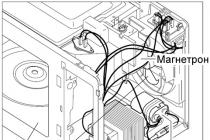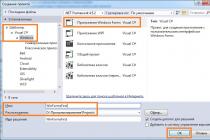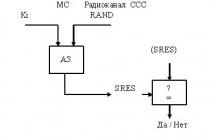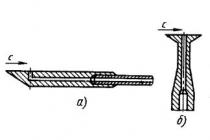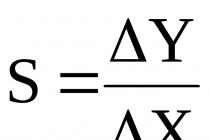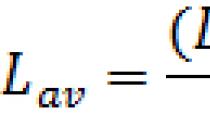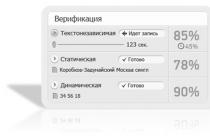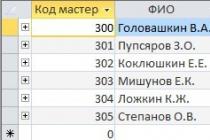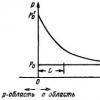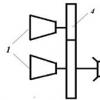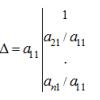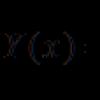Not every user knows what all the keys on a PC keyboard are for. But among them there are many necessary and unused buttons. To learn how to use them more effectively, you should know the purpose of the keyboard keys and be able to use them at the right time.
Having started using a computer for the first time, a novice user does not think about what additional keys are needed for, and then completely forgets about them, using only those that allow you to type text. But additional buttons and their combinations can save you time and, in some cases, money.
All keys are divided into 7 groups, each of which allows you to speed up your work on the computer and make the process more efficient. Thanks to the use of additional buttons, the user can quickly type text, draw up a report, or simply switch between windows.
Depending on the function, the keys are divided into groups:
1. Function keys (F1-F12) are designed to perform special tasks and, when pressed again, cancel the called action. For example, F1 is pressed to invoke the help of a program whose window is active at the time of pressing. In games, the key performs the function that is assigned to it in the settings.
2. Alphanumeric are needed to enter numbers, keys, punctuation marks and other symbols used when working on a PC.
3. Control keys which include HOME, END, PAGE UP, PAGE DOWN, DELETE and INSERT.
4. Cursor keys are used to move the cursor while working in text editing programs, in the browser, or when selecting files on a computer.
5. Control keys (modifiers) (Alt, Ctrl, Win, Caps Lock, Fn) most commonly used in combination with each other or with other keys on a keyboard.
6. Numeric keys are needed in order to quickly enter numbers, therefore they are often used when writing reports or working in a calculator.
7. Editing keys (deleting information) - Backspace, Delete.
The location of the keys on different keyboards may differ, but they are all located in approximately the same places relative to each other. Additional keys can also be built-in to mute the sound, increase or decrease the volume, and quickly navigate to the mailbox.

Let's take a closer look at the purpose of the computer keyboard keys with their full description.
Each key can perform one or more functions:
- Space bar located at the bottom of the keyboard and is the largest. When typing, it makes a space between words, and when a fragment of text is selected, it replaces it with a space, which speeds up work in text editor... Scrolls down in an Internet browser.
- Esc when clicked, cancels the last action, closes or minimizes open windows.
- Print Screen creates a screenshot that is inserted into text and graphic editor... The resulting image is called a "screenshot". The key is also used to print the image from the screen.
- Scroll Lock is needed to enable the mode in which you can scroll the page up and down with the cursor keys. But it doesn't work on all computers.
- Pause / Break pauses a running process, for example, when the computer boots up, you can pause and view system information, but like the previous described key, it does not work on all devices.
- Insert activates the mode in which the input of characters occurs over the typed one. After pressing, it prints over the entered characters, which at that moment begin to be erased. To cancel the action, press the key again.
- Delete denoted on the keyboard as Del and is needed to delete the entered characters in a text editor or selected files. If the action is carried out in a text input field, it is deleted to the right of the cursor.
- Home this is the key that jumps to the beginning of the filled line. If the cursor is at the end of a sentence in a text editor, pressing the specified button will move it before the first letter in the line. If pressing occurs on empty line, Nothing happens. In the browser, rewinds the page to the beginning (up).
- End moves the cursor to the end of the line. In the browser, rewinds the page to the very bottom.
- Page Up turns the page up. In some media players, pressing the key plays the previous file in the folder.
- Page Down scrolls down the page, and on players includes the media file that is next in the play queue.
- Backspase is used to delete characters to the left of the cursor in a text editor or in a character input field.
- Tab used to insert a tab character equal to 8 spaces (forms a paragraph, for example in Word). Also used in combination with other keys.
- Caps lock switches uppercase letters to uppercase letters and vice versa.
- Shift capitalizes a letter when pressed at the same time. If Caps Lock is on, it will be lowercase.
- Alt used in several keyboard shortcuts. Together with Shift, it changes the layout to English, if you press Tab simultaneously with it, you will switch to the program window that was open before.
- Num lock turns on the mode in which additional numeric keys work.
- Enter is needed to go to the next line in a text editor, as well as to enter information and confirm actions in many programs.
- Windows is used to open the menu that is called when you click the "Start" button.
- Context is located near the right key and calls the context menu, which differs depending on the program used.
- The cursor keys move the cursor and allow you to scroll through the pages in the browser.

Hot keys speed up the work at the computer, calling one or another action. In the combinations described, the keys are clamped in the order in which they are written. Using a combination of buttons, it is easy to speed up the process of calling a particular function.
Windows + Pause / break - Opens a window that displays information about the computer.
Windows + L is a combination that causes the computer to lock. It helps to change faster account user.
Windows + D - Minimizes all windows. To open them, the keys are pressed again.
Windows + Space - the combination is meant to show the desktop.
Windows + E - needed to go to "my computer".
Windows + R - Opens the Run window.
Windows + Tab - switch between windows running programs.
Ctrl + Shift + Esc - Opens the Task Manager.
Win + F - opens a search window file system computer.
Ctrl + F - activates the search function in the document or in the program.
Alt + F4 is a keyboard shortcut that closes the active window. If the desktop is active, allows you to restart or shutdown the computer when pressed again.
Ctrl + - zooms in or out depending on which direction the mouse wheel is scrolled in.
Alt + Print Screen - the combination creates a screenshot of the window of the program that is active at this moment.

Hotkeys when working with text and files
Ctrl + A - selects all characters in a text editor or files in open folder.
Ctrl + C - copies the selection or files.
Ctrl + V - Pastes text or files contained in the clipboard.
Ctrl + Z - the combination is needed to undo the last action.
Ctrl + P - Opens the print window.
Ctrl + N - opens a new window of the program that is running at that moment.
Ctrl + S - saves typed text or project.
Shift + Delete - the combination completely deletes files without placing them in the trash. Be careful and careful when using this keyboard shortcut!

Typing constantly on one keyboard is hard to get used to if you have to use multiple computers. In an electronics store, it is difficult to choose a specific model if you do not know what types of devices exist.
Depending on the buttons, all keyboards are divided into 3 types:
- Compact - are devices that do not have additional numeric keys. Such keyboards are convenient on a small computer desk and are less expensive.
- Standard or full-size have all the keys described.
- Multimedia has additional buttons designed to control the playback of media files and control the sound. Also, such devices often have a key to turn on the calculator and other programs. It is possible to reassign the keys to suit your own needs. Multimedia keyboards often have USB hubs.
To find out which keyboard is more comfortable, try pressing multiple keys, comparing the feel. Some devices click too loudly during use or press harder. When pressed, it becomes clear to what depth the buttons are immersed.
In order not to get tired of keyboard noise, for permanent work you need to choose models with "softer" keys. Standard devices have a long stride, while laptops are short. This also needs to be taken into account.
A multimedia keyboard with additional buttons and connectors significantly increases the degree of comfort when working at a computer, so for long-term work it is worth choosing just such models.
Important! For comfortable work, you should purchase white keyboards. If the English and Russian letters differ in color, this allows you to quickly switch from one language to another.
Regardless of which keyboard is chosen for the job, it is important to create a comfortable environment. To do this, the arms must be in a comfortable position. Do not forget about posture. Choosing the right keyboard and observing the basic rules of working at a computer will allow you to enjoy the process.
Friends! I hope this article was useful to you, and now you know the purpose of the computer keyboard keys and will make the most of them.
LButton - left mouse button
RButton - right mouse button
MButton - middle mouse button (or wheel)
WheelDown - turn the mouse wheel "down"
WheelUp - turn the mouse wheel "up"
XButton1 - fourth mouse button, side
XButton2 - fifth mouse button, side
Keyboard
Note: The names of the alphabetic and numeric keys are exactly the same as the symbols for these keys. That is, the "b" key is written as b and the "5" key as 5.
Space - space
Enter (or Return)
Escape (or Esc)
Backspace (or BS)
Delete (or Del)
Insert (or Ins)
NumpadDiv - Slash "/"
NumpadMult - asterisk "*"
NumpadAdd - Plus "+"
NumpadSub - Minus "-"
NumpadEnter - "Numpad-Enter" key
The following key names are used when Numlock is off:
NumpadClear - same button as Numpad5 on keyboard
These key names are used when Numlock "e is enabled:
NumpadDot - "Numpad-point"
WITH F1 on F24- twelve or more function keys, on most keyboards present in the topmost row.
AppsKey - a key that calls the context menu of a file / program, as with a right mouse click.
LWin - left key "Windows"
RWin - right key "Windows"
Control (or Ctrl)
LControl (or LCtrl) - left "Control"
RControl (or RCtrl) - right "Control"
LAlt - left "Alt"
RAlt - Right Alt. Note: if your keyboard has AltGr instead of RAlt, you can use the following notation for this key:<^>! Also note that the AltGr key can be written as the "LControl & RAlt ::" keyboard shortcut.
Help is a rather rare key, it is not present on all keyboards. And it doesn't work like F1 at all.
Sleep - we warn that the "Sleep" key on some keyboards does not work under this entry.
Extended Function Keys for Multimedia and Internet Keyboards:
Browser_Favorites
Media_Play_Pause
The SCnnn notation, where nnn is the scancode of the key, allows us to work with the rest of the keys not mentioned above. See below for more details.
The option is to write VKnn, where nn is the hexadecimal virtual key code. Despite the fact that this rarely used method is supported by all versions of the program, only from version 1.0.38.02 and higher, for some types of hotkeys, it is implemented to prevent them from being tracked by the "keyboard hook" function (keyboard interrupt handler). For example, the following keyboard shortcut does not use a keyboard hook and, as a result, can be invoked by pressing both the Home key and the NumpadHome key:
^ VK24 :: MsgBox You pressed Home or NumpadHome` while holding down the Control key.
Joystick
Joy1 - Joy32: Joystick buttons. For the convenience of determining the numbers of the buttons of your joystick, a special test script was created (see the link in the original article). Note that prefixes such as ^ (control) and + (shift) are not supported here (however, the GetKeyState command can be used). Also note that joystick keystrokes are always directed directly to the active window that supports receiving such signals.
Although the following joystick controls cannot be used as hotkeys, they can be used using the GetKeyState command:
JoyX, JoyY, and JoyZ: where X (horizontal), Y (vertical), and Z (height / depth) are the joystick coordinate axes.
JoyR: joystick steering wheel or 4th axis of joystick.
JoyU and JoyV: 5th and 6th axis of the joystick.
JoyPOV: the point-of-view (hat) control (POV control, "hat" or "view switch"; for example, the view from the player's eyes).
JoyName: the name of the joystick.
JoyButtons: number of buttons supported by the joystick (not always accurate).
JoyAxes: The number of directions supported by the joystick.
JoyInfo: generates a string of zero or more characters to illustrate the capabilities of the joystick: Z (there is a Z direction), R (there is an R direction), U (there is a U direction), V (there is a V direction), P (there is a POV control), D (POV control has a limited number of discrete / intermediate settings), C (POV control transmits continuous / precise data). Example string: ZRUVPD.
Multiple joysticks: if you use several joysticks at the same time, for more precise command addressing, use the joystick number before the name of the joystick key when writing. For example, the entry 2joy1 would represent the first button of the second joystick.
Note: if you have problems with scripts detecting your joystick, you can try changing the joystick number from 1 to something else, even though you have only one connected to your computer. It is not known for what mystical reasons, but sometimes this, together with the use of our test script, gives a positive result.
Using the joystick as a mouse: a special script turns your joystick into a mouse (see the link in the original article).
Remote control panels
Receiving signals from remote control panels using a special WinLIRC client script - see the link in the original article.
Special keys
If your keyboard or mouse has keys not listed above, you can still use them as hotkeys using the following method:
SC159 ::; Replace 159 with your key index. MsgBox, You pressed the% A_ThisHotKey% Return
How alternative way or in addition to the above: to reassign any key to our "desired" key, use the notation of the form #c :: Send (vkFFsc159)... Replace 159 with your key index determined by the above method. If necessary, replace the letters FF with those displayed in the first column of the "View-Key history" log (your virtual key code).
K6 -designation for Pentium-compatible processors manufactured by AMD.
KB -kilobyte - 1024 bytes.
KB - see Knowledge Base.
Kbit - kilobits - 1024 bits.
Kbyte -kilobyte - 1024 bytes.
Kermit -a protocol for transferring information over telephone lines for asynchronous communication, in which the transfer occurs in blocks of variable length with error checking.
Kernel -core - lower level operating system responsible for I / O operations and memory management at the system level.
Kerning -kerning - changing the distance between different pairs of characters, for example, different spaces can be used between the pairs “UA” and “AL”.
Key -key - 1. the identifier of the record in the databases, with the help of which the link to the records is made, 2. the set of characters for encoding / decoding messages. 3. key on the keyboard.
Key -key - a button on the keyboard with symbols that identify it.
Key action -key action - pressing and releasing a key on the keyboard.
Key code -key code - the numeric code assigned to the key. When a key is pressed, this code is transmitted to computer programs for processing.
Key combination -key combination - pressing several keys one after another. For example, the entry Ctrl + Alt + Del indicates that the key is pressed first Ctrl, this key is not released and the key is pressed Alt without releasing these two keys, you need to press Del, after which all three keys are released.
Key disk -key disk is a special diskette that contains information that cannot be copied to another diskette and serves as a means of protection against piracy.
Key field -key field is a concept in databases that defines a memory area where a key or part of it is located.
Key in -pressing a key - pressing a key at which a character is entered that corresponds to it.
Keyboard -keyboard - a device with which information is entered into a computer. Consists of a panel containing keys.
Keyboard buffer -keyboard buffer - a buffer in which characters entered from the keyboard are entered, and has a standard size. From the buffer, data is sent to the central processor for processing. When the processor is busy for a long time, the entered characters are accumulated in the buffer, and when the processor overflows, no further input occurs and the system issues a sound signal.
Keyboard controller -keyboard controller - a microprocessor used to process information entered from the keyboard.
Keyboard enhancer -keyboard expander - a program that is designed to override the values of keys.
Keyboard layout -keyboard layout - the location of the keys on the keyboard. It can be AZERTY and QWERTY by the names of the keys in the top row. QWERTY layout is more common. In addition, there are keyboards with a different number of keys, containing 84 and 101 keys.
Keyboard lockout -keyboard lock - a situation in which it is prohibited to enter characters from the keyboard. For example, in older models of computers there was system unit a lock that, when turned on, will lock the keyboard. Keypad lock can also occur in case of errors in the system and in other cases.
Keyboard template -keyboard template - stickers on the keys with the indication of symbols or commands corresponding to the key. Previously, due to the fact that the keyboard did not have Cyrillic (Russian characters), stickers were often used to indicate the location of the characters.
Keylock -keypad lock - a lock on older models of computers, in which there is a lock on the system unit. When the lock is closed, the keypad is locked.
Keypad -keypad - An accessory keyboard, such as a numeric keypad, that can be used in a standard keyboard or laptop where the numeric keypad is aligned with other keys.
Keypunch -puncher - a device that prepares punched cards using the keyboard for their further work. Now it is practically not used.
Keystroke -keystroke - the action of pressing and releasing a key on the keyboard.
Keystroke buffer -keystroke buffer - the buffer containing the values of the keys pressed. When this buffer overflows, a sound signal is generated.
Keyword - keyword- a concept used in databases, denoting a certain code by which you can quickly find the desired record (page, file). In programming languages, indicates an operation to be performed.
Kill -kill - cancel the operation of the current program.
Kilo -kilo is a prefix denoting a thousand times magnification. For example, a kilogram is equal to a thousand grams. In computing, a kilo means 2 10 - 1024, that is, one kilobyte is equal to 1024 bytes.
Kilobit -kilobits - 1024 bits.
Kilobyte -kilobyte - 1024 bytes.
Kilohertz -kilohertz - 1000 hertz.
Kiosk mode -kiosk mode - displays the program in full screen when browsing the World Wide Web, in which many buttons are removed from the screen.
Kludge -kluge is a blooper, that is, a program or hardware that works correctly but is not done elegantly. For example, a program that is difficult to understand, since it is not written in the style of structured programming, but with a large number of jumps in the body of the program.
Knowledge acquisition -knowledge acquisition - working with an expert in an expert system, in which the knowledge base is filled with information.
Knowledge Base (KB) -knowledge base - the base in which knowledge is located. It is used in expert systems, when experts, working with the system, put their knowledge there in the form of logical rules.
Knowledge engineer -knowledge engineer - a user who can work with an expert system, but is not an expert.
Knowledge representation -knowledge representation - a system for storing knowledge in an expert system, as a rule, based on logical rules (If ... then ...).

